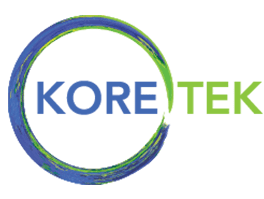In today’s networks, downtime costs money. There have been multiple techniques used in network operations centers (NOCs) to help reduce down time, but that doesn’t prevent technology from having failures. That’s where artificial intelligence for IT operations (AIOps) and automation can really shine. Finding a NOC partner that understands not only how to leverage AIOps platforms, automation tools, and other techniques is key to rapidly identifying what the issue is, reducing cost and downtime, and minimizes the risk of network disruptions.
As in other AI applications, technology mechanizes our analytical processes to maximize time, provide predictive analysis, guarantee communication notifications, and automatically remedy some problems. Organizations that leverage these tools are more responsive to the client’s needs, thus ensuring the least network downtime. Also, they allow their team to be more efficient and focus on enhanced services and continuous improvement. Here’s a closer look at how AI and automation inform what and how we provide NOC, remote engineering, or front-line maintenance services.
Fast and Thorough Incident and Analysis
At the conception of an incident (the moment something is broken), rather than having humans sort through numerous alarms to correlate and prioritize an incident ticket, AI automatically analyzes massive amounts of information in a fraction of the time, helping teams begin their response much sooner. In the case of a fiber disturbance (what was found to be a fiber cut), for example, within three minutes of receiving a series of incident alarms, the systems were able to auto-escalate to a critical ticket with an initial event analysis and probable cause. In legacy systems, this could take some organizations with human beings analyzing the alarms 15-30 minutes to correlate and escalate. Every minute costs network operators and the businesses relying on the network money. The faster IT engineering teams can understand the root cause of an incident, the faster they can restore services.
When it comes to incident break-fix resolution, the initial triage and identification of what is wrong is key to remediating a situation. Like a sprinter out of the gate, how you begin matters.
Exponentially Quicker Root Cause Analysis
In theory, AI-driven systems should be able to support engineering by quickly determining the likely root cause for an issue. The root cause of an incident, particularly with complex optical systems, can often take organizations up to an hour or more for a team to identify the root cause. With AI and automation, this can be done in under five minutes. In that time, the system collects the alarm data and provides predictive analytics to steer the staff toward underlying issue remediation. Now, engineers can validate and troubleshoot the root cause rather than sifting through dozens of alarms and logs. And when downtime equals dollars, every second counts.
Auto Remediation of Issues
Everything sounds fantastic so far, right? So, you may be wondering if an AI-driven NOC system can just fix whatever’s wrong. Not yet. Some issues will always require skilled engineering support, particularly with physical plant repairs. That’s where Kore-Tek’s Remote Engineering Support and Front Line Maintenance services come in. But AI can (upon recognition of an incident and issue such as a fiber disturbance) provision auto-shutoff or auto-resolution of some issues. In the event of a fiber disturbance, for instance, AI can also shut off lasers, making it safer for anyone in the field working around and on the problem. AI can reroute traffic within certain parameters or turn ports on or off, but not fully remediate a problem like remote engineering support can. Further, if you can tap into the local power company’s API during an outage, you can automatically determine if there’s a power outage in the area responsible for alarms. Important information like this informs contingency plans and can be included in trouble tickets before technicians begin to address the issue. The bottom line – the more devices the NOC monitors, the more robust information your NOC partner can provide.
What’s next for NOC remediation automation?
You may be wondering, if machine learning is at play. Yes, the platform does output suggestions for correlation logic. However, data still has be evaluated by people, largely due to the fact that the overall sample size that the AI engine has is not in the 100,000’s.
No Need to Navigate this Rapid Transformation Alone
AI has come on the scene quickly and legacy systems can no longer compete, especially when it comes to network up time. For some organizations, change may be hard or too daunting to adapt. The solution? Partner with a professional managed service organization who has integrated the most up-to-date tools and technology. This is a great way for your team to become savvy and confident. The benefits of this approach are so significant and so immediate, they can’t be ignored. Your leadership will be delighted, and your team will be motivated.
Read More on NOC Services
https://kore-tek.com/understanding-your-nocs-pulse/
https://kore-tek.com/selecting-an-outsourced-noc-and-engineering-services-partner/
https://kore-tek.com/noc_rfp/
https://kore-tek.com/when-should-you-consider-outsourcing-your-day-2-network-services/
